Related Research Articles

Chernobyl or Chornobyl is a partially abandoned city in the Chernobyl Exclusion Zone, situated in the Vyshhorod Raion of northern Kyiv Oblast, Ukraine. Chernobyl is about 90 kilometres (60 mi) north of Kyiv, and 160 kilometres (100 mi) southwest of the Belarusian city of Gomel. Before its evacuation, the city had about 14,000 residents. While living anywhere within the Chernobyl Exclusion Zone is technically illegal today, authorities tolerate those who choose to live within some of the less irradiated areas, and an estimated 150 people live in Chernobyl in 2020.
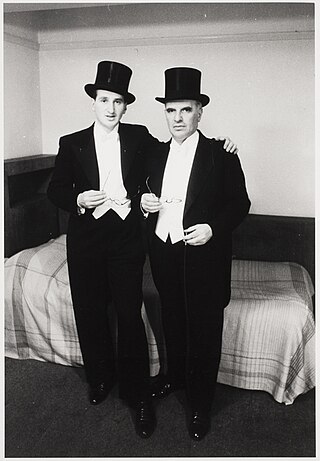
Erich Salomon was a German Jewish news photographer known for his pictures in the diplomatic and legal professions and the innovative methods he used to acquire them.
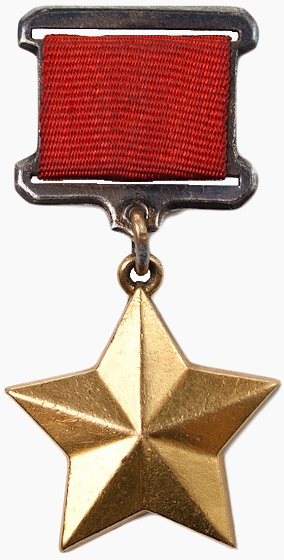
The title Hero of the Soviet Union was the highest distinction in the Soviet Union, awarded together with the Order of Lenin personally or collectively for heroic feats in service to the Soviet state and society. The title was awarded both to civilian and military persons.

Pripyat, also known as Prypiat, is an abandoned industrial city in Kyiv Oblast, Ukraine, located near the border with Belarus. Named after the nearby river, Pripyat, it was founded on 4 February 1970 as the ninth atomgrad to serve the nearby Chernobyl Nuclear Power Plant, which is located north of the abandoned city of Chernobyl, after which the power plant is named. Pripyat was officially proclaimed a city in 1979 and had grown to a population of 49,360 by the time it was evacuated on the afternoon of 27 April 1986, one day after the Chernobyl disaster.
Igor Fedorovich Kostin was one of the five photographers in the world to take pictures of the Chernobyl nuclear disaster near Pripyat in Ukraine, on 26 April 1986. He was working for Novosti Press Agency (APN) as a photographer in Kyiv, Ukraine, when he represented Novosti to cover the nuclear accident in Chernobyl. Kostin's aerial view of the Chernobyl nuclear power plant was widely published around the world, showing the extent of the devastation, and triggering fear throughout the world of radioactivity contamination the accident caused, when the Soviet media was working to censor information regarding the accident, releasing limited information regarding the accident on 28 April 1986, until the Soviet Union's collapse in 1991.

The Chernobyl Nuclear Power Plant Zone of Alienation, also called the 30-Kilometre Zone or simply The Zone, was established shortly after the 1986 Chernobyl disaster in the Ukrainian SSR of the Soviet Union.
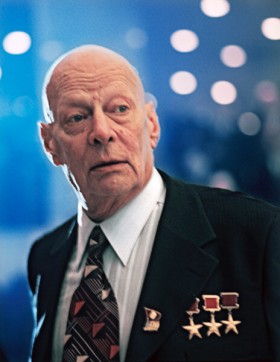
Anatoly Petrovich Alexandrov was a Russian physicist who played a crucial and centralizing role in the former Soviet program of nuclear weapons.

The Chernobyl disaster began on 26 April 1986 with the explosion of the No. 4 reactor of the Chernobyl Nuclear Power Plant near the city of Pripyat in northern Ukraine, near the Belarus border in the Soviet Union. It is one of only two nuclear energy accidents rated at the maximum severity on the International Nuclear Event Scale, the other being the 2011 Fukushima nuclear accident. The response involved more than 500,000 personnel and cost an estimated 18 billion rubles. It remains the worst nuclear disaster in history, and the costliest disaster in human history, with an estimated cost of $700 billion USD.

Chernobyl liquidators were the civil and military personnel who were called upon to deal with the consequences of the 1986 Chernobyl nuclear disaster in the Soviet Union on the site of the event. The liquidators are widely credited with limiting both the immediate and long-term damage from the disaster.

The Chernobyl disaster is the world's worst nuclear accident to date.

Slavutych is a city and municipality in northern Ukraine, purpose-built for the evacuated personnel of the Chernobyl Nuclear Power Plant after the 1986 disaster that occurred near the city of Pripyat. Geographically located within Chernihiv Raion, Chernihiv Oblast, Slavutych is administratively subordinated to the Kyiv Oblast and is part of Vyshhorod Raion. It is coterminous with Slavutych urban hromada, one of the hromadas of Ukraine. In 2021 the city had a population of 24,464.

Antanas Sutkus is a Lithuanian photographer.
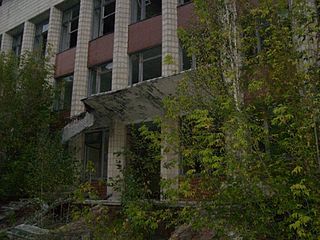
Poliske or Polesskoye is an abandoned settlement and former urban-type settlement in the Chernobyl Exclusion Zone, part of Kyiv Oblast, Ukraine. It is located on the Uzh River and was an administrative center of Poliske Raion (district). However, later the town was taken out of a registry as it was completely depopulated being located in the Zone of alienation. Currently around 20 people live there, so called samosely ("self-settlers").
The Dr. Erich Salomon Award (Dr.-Erich-Salomon-Preis), dedicated to Erich Salomon, is a lifetime achievement award for photojournalists given by the German Society for Photography.
William Albert Allard is an American documentary photographer who worked in color from 1964.
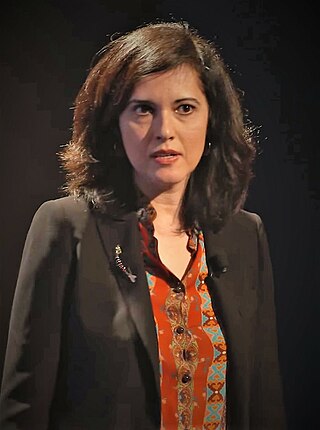
Rena Effendi is an Azerbaijani freelance photographer. Her work focuses on themes of environment, post-conflict society, the effects of oil industry on people, and social disparity.
Kate Brown is a Professor of Science, Technology and Society at Massachusetts Institute of Technology. She is the author of Manual for Survival: A Chernobyl Guide to the Future (2019), Dispatches from Dystopia (2015), Plutopia (2013), and A Biography of No Place (2004). She was a member of the faculty at the University of Maryland, Baltimore County (UMBC) from 2000 to 2018. She is the founding consulting editor of History Unclassified in the American Historical Review.

Boris Yevdokimovich Shcherbina was a Ukrainian Soviet politician who served as a Deputy Chairman of the Council of Ministers of the Soviet Union from 1984 to 1989.
Nikolai Dmitrievich Tarakanov is a former Soviet military leader, doctor of technical sciences, member of the Presidium of the Russian Academy of Natural Sciences, founder and chairman of the Coordination Council of the Presidential Club Trust, Center for Social Protection of Persons with Disabilities, a member of the Union of Russian Writers, laureate of the M.A. Sholokhov International Literary Prize.
References
- ↑ "Visum". visum-reportagen.de. Retrieved 4 October 2018.
- ↑ "Broken Empire: After the Fall of the USSR, signed photo book". gerdludwig.com. Retrieved 4 October 2018.
- ↑ "Profil Gerd Ludwig". visapourlimage.com. Retrieved 4 October 2018.
- ↑ "Gerd Ludwig The Long Shadow Of Chernobyl 1st Place People". photoawards.com. Retrieved 4 October 2018.
- ↑ "9 to Receive the Missouri Honor Medal for Distinguished Service in Journalism". journalism.missouri.edu. 10 June 2015. Retrieved 3 October 2018.
- ↑ "Long Shadow of Chernobyl". longshadowofchernobyl.com. Retrieved 4 October 2018.
- ↑ "The Long Shadow of Chernobyl". iTunes .